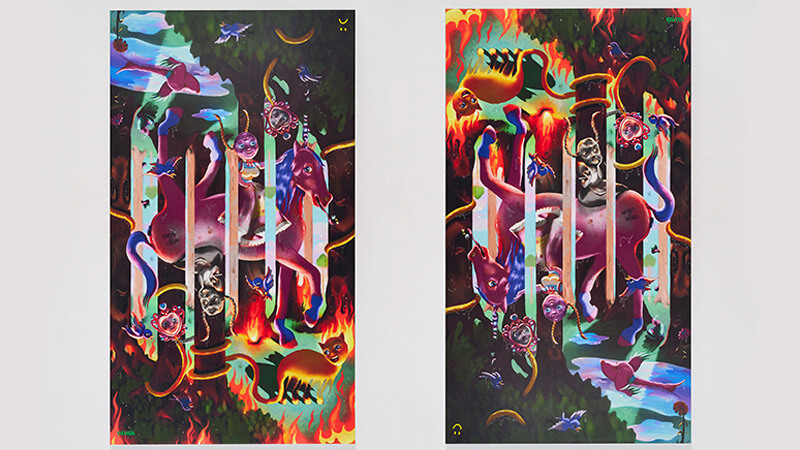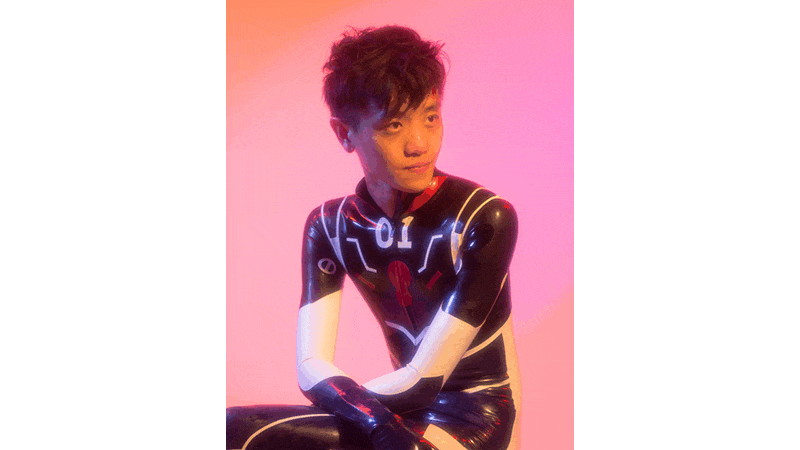The Cult Of ‘Cute’: Innocent Eye Candy – Or Something Darker?
‘Cute’ is a slippery term, hard to define and harder to identify. It is complex and ubiquitous, so much so that there is an entire area of academia devoted to ‘cute studies’. It is no small feat to stage an exhibition collating contemporary cute culture into one landmark show, however Cute, which opens 25 January at Somerset House in London, aims to do so. “Cuteness is an aesthetic, but it’s also an affective phenomenon,” says artist Rachel Maclean, whose video and installation works feature in the exhibition. “Cute captures something about the complexity, weirdness and ambiguity of the world and how we engage with visual culture.”

Cute is appealing, in a sweet, shimmery, vulnerable way. Cute things, after all, provoke a reaction – we want to protect them, hold them, squish them, sometimes even hurt them (something psychologists call ‘cute aggression’). Maclean’s sugary-coloured artworks explore these intricacies through saccharine nightmares of topsy-turvy unicorns dancing among apocalyptic flames (!step on no petS Step on no pets!, 2021), or frowning fried-egg sunshines (?I did, did I¿, 2022). “I intentionally make explicit the contradictions in my work,” she says. “I satirise the ‘cuteification’ of society while liking the maximal aesthetic of it; I make fun of the narcissism in a world obsessed with ‘self-care’ while playing all the characters in my film myself.”
One of the contradictions of cuteness is the combination of its ‘innocent’ exterior and its desirability – which sometimes strays into sexualisation. The Singapore-born, London-based artist Bart Seng Wen Long’s work, which also appears in the Somerset House exhibition, is informed by the entanglement of kawaii culture (the Japanese iteration of cuteness) with sexuality, fetish and power dynamics, made up of images depicting Hello Kitty-branded cock rings and TikTok montages of cosplay maids on top of kitty-eared militants. To him, cuteness and fetish “involve voiding yourself to obtain this current of kawaii-ness, which exists outside of you, and which you embody to get more pleasure, or even to survive”.
It is impossible, however, to talk about the relationship between cuteness and sexuality without recognising how it has provoked the infantilisation of women – it runs through everything from Japan’s ‘Lolita’ fashion movement (a street-style movement linked to Visual Kei, a genre of Japanese rock music that emerged in the ’90s), to the music video of Britney Spears’s Baby One More Time (1998). “As soon as something is said to be ‘cute’ it gives it a diminutive status, in the same way as when something is said to be ‘feminine’,” Maclean explains. She also points out a link between cuteness and infantilisation that transcends gender: “There is a more generalised desire to devolve to childhood, like some corporate offices having slides and ball pits, or the popularity of adult onesies.” It’s an interesting thought, especially given the fact that, thanks to the internet and social media, today’s children “are faced with more ‘adult’ concerns, such as climate change and war”, adds Maclean.

Internet culture is intrinsic to the proliferation of cuteness. Seng Wen Long tells me of a particular phenomenon on TikTok, in which soldiers or militants can be seen performing popular dances or ad-libbing to chart hits. “We are all dragged along by ‘the algorithm’,” he says. “You can be shown the most absurd, horrible thing on your [social media] timeline, followed by a cute, heartwarming clip of a baby animal. It becomes a way to process manmade horror,” a façade to convey more uncomfortable or problematic ideas.
Despite the darker sides of cuteness, the exhibition’s curator, Claire Catterall, says it shouldn’t be written off as a completely negative phenomenon; it is more complex than that. “Cuteness, because it is so unstable, ambiguous, indeterminate and, sometimes, quite paradoxical, allows you to say some really quite radical things in an interesting way. And because it is so ubiquitous, it can touch everybody,” she says. To Maclean, cuteness is an “antidote to a world that increasingly feels polarised and homogenised”. The term ‘cute’ might sometimes seem diminutive yet, evidently, it is anything but.
5 Artists Whose Work Epitomises ‘Cute’
- Aya Takano (1976-present) – The Japanese painter, illustrator, sci-fi writer and manga artist paints shimmery, dreamlike scenes from a fantastical adolescence.
- Mike Kelley (1952-2012) – The late American artist often used stuffed animals in his work, exploring the control and sometimes darkness behind the symbolism of cultural artefacts and toys. He once said: “You are them, whether you like it or not.”
- Louis Wain (1860-1939) – The English artist known for his anthropomorphised felines. The Electrical Life Of Louis Wain (2021), a film starring Benedict Cumberbatch and Claire Foy, is based on his life.
- Yumeji Takehisa (1884-1934) – Born in Okayama Prefecture, Japan, the painter and printmaker rose to fame during the Taisho period of Japanese history (1912-1926), which fused local culture with Western influences.
- Margaret Keane (1927-2022) – Keane was known for her ‘big eyes’ paintings – recognisable depictions of women, children and animals with impossibly huge eyes. Keane’s life was the subject for the 2014 Tim Burton film Big Eyes, and her work inspired early drawings of the book and cartoon series The Powerpuff Girls.
Cute runs at Somerset House, London until 14 April 2024
Ella Slater is an art and culture writer based in London
Image Credits: Playing Dress-Up With AI (2023), Graphic Thought Facility; Affirmations, Hannah Diamond. Drunken Gravity (2019), Xiuching Tsay, image courtesy of the artist. Save our souls_02 (seal) (2022), Ram Han, courtesy of the artist © Ram Han; !step on no petS Step on no pets! (2021), Rachel Maclean, courtesy the artist & Josh Lilley, London. Photo Elliott Hatherley; Cluster video (2023) © Bart Seng Wen Long, courtesy the artist. Commissioned by Somerset House Trust




